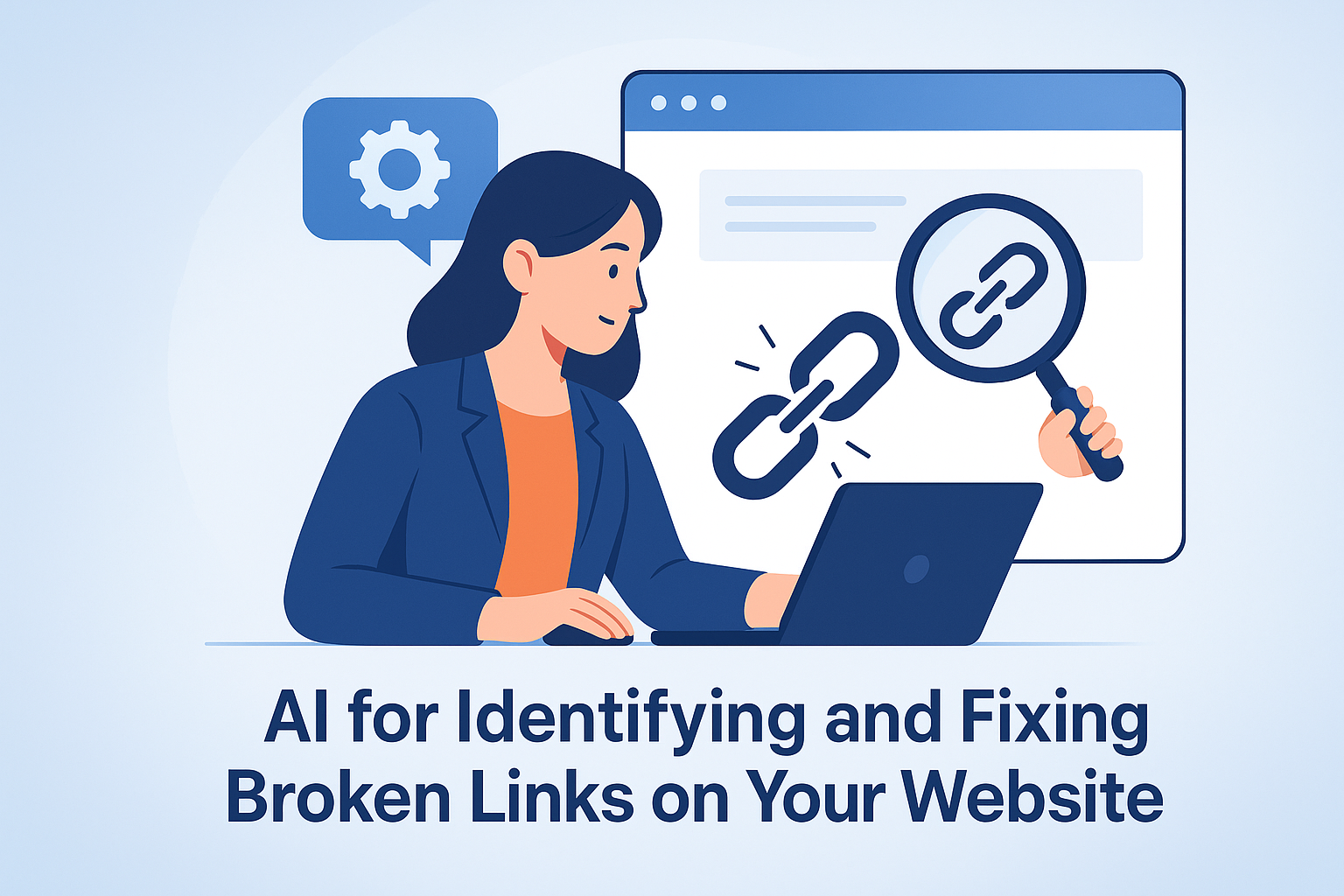If you’re managing your own website—whether it’s a blog, e-commerce store, portfolio, or business site—you’ve likely heard of technical SEO. And if you’re like most DIY site owners, the phrase might sound a bit intimidating.
But don’t worry. You don’t need to be a developer or IT expert to understand—and even implement—technical SEO best practices, especially with the help of AI.
In this guide, we’ll break down what technical SEO actually is, why it matters, and how you can improve it without writing a single line of code. We’ll also show you how the DIYSEO GPT, SEO AI Writer, and Link Marketplace can make technical SEO simpler, faster, and more accessible.
What is Technical SEO?
Technical SEO refers to the process of optimizing your website’s structure and code so that search engines can effectively crawl, index, and rank your pages.
It’s not about the content on your pages—that’s on-page SEO. Instead, technical SEO is all the behind-the-scenes work that helps search engines:
- Access your website
- Understand its architecture
- Index your pages correctly
- Prioritize your best content
- Serve your site to users quickly and securely
Think of technical SEO as the foundation of your website’s search engine visibility. Without it, even great content may never show up in search results.
Why Does Technical SEO Matter?
Here’s why technical SEO is non-negotiable for ranking well:
- Search engines won’t rank what they can’t crawl or index
- Page speed and mobile-friendliness directly affect rankings
- Duplicate or thin pages can dilute your visibility
- Errors like broken links, redirect loops, or missing metadata confuse crawlers
- Rich results and features (like product reviews, FAQs, sitelinks) rely on structured data—powered by technical SEO
If you skip technical SEO, you’re building a site on shaky ground. But with the right tools and some AI-powered help, you can solidify your structure and start climbing the rankings—without hiring a technical SEO consultant.
Key Elements of Technical SEO (Explained Simply)
Let’s look at the most important technical SEO elements that every website owner should understand and manage:
1. Crawlability
Search engines use bots (called “crawlers”) to discover your content. If your site blocks those bots—or makes it hard to navigate—your content won’t be found.
Common issues:
- Pages blocked in
robots.txt - Poor internal linking structure
- Orphaned pages (no links pointing to them)
AI Help: Use DIYSEO GPT to run a prompt like:
“Scan my site and show me which pages Google can’t access.”
2. Indexability
Just because Google can crawl your pages doesn’t mean they’ll be indexed (added to search results). Some pages might be marked “noindex” or missing from your sitemap.
Common issues:
- “Noindex” tags accidentally applied
- Pages excluded from XML sitemaps
- Duplicate pages cannibalizing rankings
AI Help: Ask DIYSEO GPT:
“List any important pages on my site that aren’t indexed and why.”
3. Site Speed
Slow sites not only frustrate visitors—they get ranked lower in search results. Google uses speed (especially on mobile) as a ranking signal.
Common issues:
- Uncompressed images
- Too many scripts or plugins
- Slow hosting
AI Help: Run:
“Analyze my homepage speed and give me 5 easy ways to improve load time.”
4. Mobile-Friendliness
With mobile-first indexing, Google primarily ranks your site based on the mobile experience. If your site looks bad or loads poorly on phones, it will hurt your rankings.
Common issues:
- Tiny text or buttons
- Poor responsiveness
- Slow mobile load speed
AI Help: Ask:
“Check my site’s mobile performance and suggest layout or speed fixes.”
5. Secure Connections (HTTPS)
Security is essential. Google prefers sites using HTTPS (secure URLs). If your site still uses HTTP, it’s time to upgrade.
AI Help: Ask:
“Check if my website uses HTTPS and show me any insecure resources.”
6. Structured Data (Schema Markup)
Schema helps search engines better understand your content. It powers rich results like:
- Star ratings
- FAQs
- Products
- Recipes
- Local businesses
AI Help: Use the SEO AI Writer to generate:
“FAQ schema for this blog post”
or
“Product schema for my e-commerce page.”
7. Metadata Optimization
Your title tags and meta descriptions influence how your site appears in search results. Optimized metadata improves click-through rates (CTR) and overall SEO.
Common issues:
- Missing or duplicate titles
- Too short or too long
- Not keyword-optimized
AI Help: Use the SEO AI Writer to:
“Generate SEO-friendly title and description for my services page.”
8. Redirects and Broken Links
Old or changed URLs need proper redirects (usually 301). Broken links (404 errors) frustrate users and bots alike.
AI Help: Run a GPT prompt:
“Identify broken internal links and create 301 redirect instructions.”
You’ll get a full list of fixes you can implement using a plugin or simple interface in your CMS.
How DIYSEO Makes Technical SEO Easy for Beginners
You don’t need to learn code, inspect server logs, or dig through Google Search Console. Here’s how DIYSEO gives you everything you need, in plain English:
✅ DIYSEO GPT
Your AI-powered assistant. Ask anything like:
- “Audit my site’s technical SEO health”
- “Why isn’t Google indexing this page?”
- “Create a redirect map for all outdated URLs”
It gives answers you can understand—not just jargon.
✅ SEO AI Writer
Not just for content! The AI Writer helps you:
- Write title and meta descriptions
- Generate schema markup
- Fix content structure issues (like headers or duplicate content)
This replaces hours of manual work with just a few clicks.
✅ Link Marketplace
Once your technical SEO is solid, it’s time to build authority. Use the Marketplace to:
- Acquire relevant backlinks
- Improve Domain Authority
- Boost your ranking power
No outreach or negotiation—just smart SEO.
A Beginner-Friendly Technical SEO Checklist (AI-Powered)
Here’s a simple starter checklist for DIY site owners. You can use this every month:
🧰 Monthly DIYSEO Checklist
| Task | Tool | Prompt / Action |
|---|---|---|
| Crawl audit | GPT | “What pages are uncrawlable on my site?” |
| Index check | GPT | “Which pages are not indexed and why?” |
| Metadata | SEO AI Writer | “Create title/meta for [page]” |
| Speed check | GPT | “Speed audit and easy fixes” |
| Schema markup | SEO AI Writer | “Generate schema for [page type]” |
| Broken links | GPT | “Find and fix broken internal links” |
| Redirects | GPT | “Generate redirect rules for 404s” |
| Internal links | GPT | “Suggest internal links for [post]” |
| Authority | Link Marketplace | Buy 2–3 quality backlinks |
Final Thoughts: You’ve Got This—With AI on Your Side
Technical SEO may sound intimidating, but it doesn’t have to be. As a DIY website owner, you now have access to the same powerful insights and capabilities that agencies and developers once controlled—thanks to AI.
With DIYSEO GPT, the SEO AI Writer, and the Link Marketplace, you can:
- Understand what’s holding your site back
- Implement fixes confidently (without code)
- Stay ahead of SEO issues before they cost you traffic
Whether you’re running a personal blog or growing an e-commerce brand, technical SEO is now something you can master.
You’ve got the power of AI. Let it work for you.
Frequently Asked Questions
1. What exactly is Technical SEO, and why is it important for my DIY website?
Technical SEO refers to the optimization of your website’s infrastructure so that search engines can efficiently crawl and index your site. It’s not just about keywords and content. Technical SEO forms the backbone of your website’s ability to rank well on search engines. It includes elements like site speed, mobile-friendliness, structured data, SSL certificates, and XML sitemaps. It’s important because even if you have great content, search engines might not easily access, understand, or rank your content appropriately without the proper technical setup. Like building a house on a solid foundation, technical SEO ensures your site is prepared for search engines, facilitating potential higher rankings, better visibility, and ultimately, increased organic traffic.
2. How does site speed affect my website’s SEO, and how can I improve it?
Site speed is a critical factor in technical SEO because both users and search engines prefer fast-loading websites. Slow sites can lead to higher bounce rates, meaning users leave quickly, which signals to search engines that your site might not be fulfilling users’ needs. To improve your site speed, consider the following strategies: optimizing the size of images, leveraging browser caching, minimizing HTTP requests, using a Content Delivery Network (CDN), and ensuring your code is clean and efficient. Google’s PageSpeed Insights tool is a fantastic resource for diagnosing speed issues and finding specific ways to boost performance.
3. What is mobile-friendliness, and how can I ensure my site meets this requirement?
Mobile-friendliness refers to how well your website performs on mobile devices like smartphones and tablets. Given that more people access the internet via mobile, it’s essential that your site is responsive and easy to navigate on smaller screens. Google uses mobile-friendliness as a ranking factor, making it a key component of technical SEO. Ensure that your website uses a responsive design that adapts to different screen sizes, that text is readable without requiring zooming, and that links and buttons are easy to tap. Google’s Mobile-Friendly Test tool can analyze your site’s mobile support and offer suggestions for improvements.
4. Why is an SSL certificate important for my site, and how do I get one?
An SSL certificate ensures that data transmitted between the user’s browser and your website is encrypted and secure. This not only protects sensitive information but also builds trust with your users. Since online security is a major concern for both website owners and visitors, Google has made HTTPS, which requires an SSL, a ranking factor. As a DIY website owner, you should obtain an SSL certificate from a trusted Certificate Authority (CA). Some hosting providers include SSL certificates as part of their packages, so check with your provider to see if they offer one. If not, you can purchase an SSL certificate separately and install it yourself.
5. What role do XML sitemaps play in technical SEO, and how do I create one?
XML sitemaps serve as a roadmap of your website that helps search engines find and index your pages. They contain a list of URLs on your site accompanied by metadata about each URL, such as when it was last updated, how often it changes, and its relative importance. This ensures that search engines understand the structure of your site and don’t miss any important pages, which is crucial for effective technical SEO. Most modern content management systems (CMS) like WordPress offer plugins or built-in options to generate XML sitemaps automatically. If you’re handling this manually, numerous online tools can assist in creating a standard XML sitemap, which you can then submit to Google Search Console for improved visibility and indexing.



